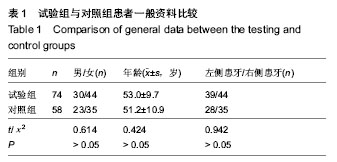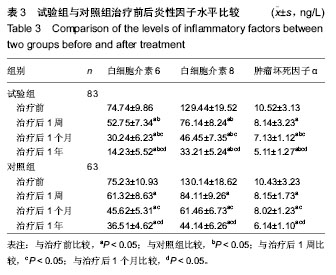| [1] 常志明.玻璃纤维桩与金属桩核修复牙体缺损的比较[J].中国组织工程研究,2013,17(29):5309-5315.
[2] 高诗茜,凌翔,李倩,等.玻璃纤维桩在前牙残根残冠修复中的临床应用[J].临床口腔医学杂志,2012,23(8):100-102.
[3] 沈正权.玻璃纤维桩树脂核和钴铬合金铸造桩核修复上颌前牙抗折性能的临床评价[J].口腔医学,2011,31(11):698-699.
[4] 戴政.纤维桩和金属桩核在上颌前磨牙修复中的效果观察[J].口腔医学研究,2013,29(9):872-873.
[5] 刘新庆,刘怡珍,刘淑琴.多个玻璃纤维桩树脂核修复磨牙残冠[J].中国组织工程研究与临床康复,2011,15(38):7161-7164.
[6] 蔡娟,蒋均红,刘怡珍,等.纤维桩核修复后牙残冠临床疗效观察[J].中国美容医学,2012,21(5):831-834.
[7] 丘洪添,尹高权,张超,等.玻璃纤维桩和插销式铸造金属桩核在根分叉较大双跟前磨牙修复中的应用比较[J].实用医学杂志,2011, 27(17):3159-3161.
[8] 吴克明.纤维桩树脂核与银汞桩核在磨牙修复中的疗效观察[J].内蒙古中医药,2011,30(16):84-85.
[9] 刘新庆,冯莺,刘怡珍.复合桩核冠修复老年患者磨牙残冠的临床应用体会[J].中华老年口腔医学杂志,2009,7(6): 351-352.
[10] 张益琳,张富强.纤维桩与树脂核材料粘接的研究进展[J].国际口腔医学杂志,2010,37(2):225-228
[11] 王琳,张文云.纤维桩粘接的研究进展[J].西南国防医药,2010, 20(6):681-683.
[12] 宋辉,王景文,邓旭亮,等.两种纤维桩短期修复效果的临床观察[J].华西口腔医学杂志,2014,32(4):390-393.
[13] 陈锡,龚雪芬,程栋,等.不同桩核全冠修复磨牙残冠5年疗效的比较[J].实用口腔医学杂志,2011,27(2):260-262.
[14] 王新知,杨茜.不同类型桩核修复牙体重度缺损的回顾与进展[J].北京大学学报:医学版,2011,43(1):6-11.
[15] 王炯明.5例插销式分体桩与铸造桩冠修复磨牙残根残冠的疗效观察[J].口腔材料器械,2011,20(1):49-50.
[16] 张红珠,贾琳.纤维桩在磨牙残冠残根修复中的临床应用[J].临床医学,2010,30(4):98-99.
[17] 陈东平,黄翠,王贻宁,等.银汞桩核用于磨牙修复的七年回顾性研究[J].口腔医学研究,2010,26(4):583-584.
[18] 吴克明.粘结银汞桩核在磨牙修复中的应用[J].内蒙古中医药, 2009,28(14):74.
[19] 石巧云,祝深山,陈秀兰.银汞桩核与整体式铸造桩核用于磨牙修复的疗效对比观察[J].咸宁学院学报:医学版,2009,23(2): 144-145.
[20] 付振君,贾宏薇,王丽玲,等.玻璃纤维桩核与金属桩核修复残根残冠临床比较研究[J].中国伤残医学,2009,17(3):60-62.
[21] 吴友农,胡申琳.离体上颌前磨牙根管治疗两个阶段抗折力及折裂模式的比较[J].牙体牙髓牙周病学杂志,2009,19(10): 571-574.
[22] 浦恩泽,李鹏,姜晗彬.两种非金属桩系统修复磨牙残根残冠的临床效果观察[J].中国现代医生,2011,49(18):32-33.
[23] 熊萍.两种桩核联合全冠修复磨牙残根残冠的临床观察[J].云南医药,2009,30(3):344-346.
[24] 李文晋,杜芙蓉,金慧兰,等.分体式铸造桩核冠修复磨牙残根残冠的临床研究[J].中国药物与临床,2009,9(8):735-736.
[25] 戴杰,王沙彬,陈香.插销式分体桩核冠在磨牙残根残冠修复中的应用[J].中国现代医生,2010,48(31):133-134.
[26] Makade CS,Meshram GK,Warhadpande M,et al.A comparative evaluation of fracture resistance of endodontically treated teeth restored with different post core systems-an in-vitro study.J Adv Prosthod.2011;3(2):90-95.
[27] Basaran EG,Ayna E,Halifeoglu M.Microleakage of endodontically treated teeth restored with 3 different adhesive systems and 4 different fiber-reinforced posts. J Prosthet Dent.2012;107(4):239-251.
[28] Silva GR,Santos-Filho PC,Simamoto-Júnior PC,et al.Effect of post type and restorative techniques on the strain and fracture resistance of flared incisor roots.Braz Dent J.2011;22(3): 230-237.
[29] Santos AR,Meira JB,Tanaka CB,et al. Can fiber posts increase root stresses and reduce fracture? J Dent Res. 2010; 89:587-591.
[30] 孙迎春,周晖,高平.桩核材料和咬合状态对牙本质应力分布影响的分析[J].口腔颌面修复学杂志,2009,10(4):243-245.
[31] 刘峰.纤维桩修复技术[M].北京:人民卫生出版社,2012:37.
[32] 张占利,管宏伟.不同桩核修复根管治疗牙抗疲劳强度的体外研究[J].实用口腔医学杂志,2010,267(6):785-788.
[33] Macedo VC, Faria e Silva AL, Martins LR.Effect of cement type,relining procedure, and length of cementation on pull-out bond strength of fiber posts.J Endod.2010;36(9):1543-1546.
[34] Leitune VC,Collares FM,Werner Samuel SM,et al.Influence of chlorhexidine application at longitudinal push-out bond strength of fiber posts. Oral Surg Oral Med Oral Pathol Oral Radiol Endod.2010;110:77-81.
[35] Silva NR,Raposo LH,Versluis A,et al.The effect of post,core, crown type, and ferrule presence on the biomechanical behavior of endodontically treated bovine anterior teeth.J Prosthet Dent.2010;104:306-317.
[36] 仲琳.纤维桩在老年磨耗上颌前牙修复中的临床应用[J].同济大学学报,2009,30(3):89-91.
[37] Mackenzie L,Burke FJ,Shortall AC.Posterior composites: a practical guide revisited.Dent Update.2011;39(3):211-212.
[38] 刘光雪,潘小波,彭利辉,等.everstick高强度可塑纤维桩对前牙残根残冠的临床修复效果观察[J].口腔医学,2010,30(1):57-59.
[39] 查玮,张怀勤,卞洁.纤维桩和金属桩修复喇叭状残根抗折性研究[J].临床口腔医学杂志,2009,25(4):228-229.
[40] 罗丽,王玥.玻璃纤维桩树脂核在残根残冠修复中的临床应用70例[J].泰山医学院学报,2010,31(9):715-716. |



.jpg)